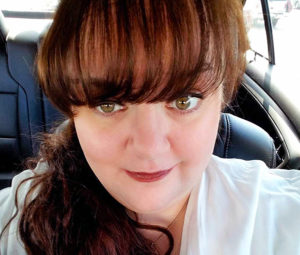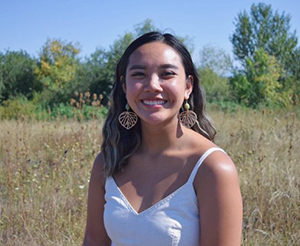September is Suicide Prevention month—a time when organizations around the world come together to show their commitment to preventing suicides. While depression and bipolar may be life-threatening conditions, it is important to know that people living with these mental health conditions can and do thrive. DBSA recognizes that without stories from our community, it may be difficult for individuals with mood disorders to imagine their journey leading to the life they’ve hoped for. In this eUpdate, you will find stories from suicide survivors who were willing to speak about their experience. These peer stories seek to provide hope—and serve as a reminder to those who are in similar situations—that they are not alone.
Suicide Prevention Awareness
 Carrie Cantwell
Carrie Cantwell
Suicide Survivor
Reach out for help, because help is out there. You’re not alone. No matter how isolated you feel, remember that there are people who care about you, who would miss you if you were gone. There are others who have been through what you’re going through, and they can provide support and encouragement. Get out of your bed, and out of your head. The world is a better place with you in it!
 Rebecca Ann Lombardo
Rebecca Ann Lombardo
Suicide Survivor
I understand how much pain you’re in. I have been there. Please stop a moment and consider if you really want to end your life or put an end to your pain. I know it hurts, but suicide is never the answer. Consider what you’ll leave behind.
 Erin San Antonio
Erin San Antonio
Suicide Survivor
Being apart of the DBSA community, I feel like I’ve gotten a chance in life. A chance to tell my story. A chance to be listened to. A chance for representation to happen for those who hold the same identities as myself. It’s a chance to make a difference in someone’s life.
DBSA & PlatformQ Health to Lead New Digital Educational Initiative to Address the Mental Health Crisis

Parent and Caregiver Corner
Suicide is Impacting Youth in America—Equipping Parents and Caregivers to Help
As suicide prevention awareness month is upon us, it is important to acknowledge how suicide is impacting young people. At DBSA we are unfortunately too familiar with the risk and impact of youth suicide. According to the CDC, suicide is the second leading cause of death for people ages 10 to 34 years old (2017). Depression affects 20-25% of adults and takes the lives of over 44,965 Americans every year (CDC).
There is hope, prevention of suicide is possible. 80%-90% of people that seek treatment for depression are treated successfully using therapy and/or medication (TADS study) and an estimated quarter-million people each year become suicide survivors (AAS).
It is important to be able to talk about suicide with your child. Taking the first step in beginning a hard conversation can ultimately be a lifesaving act. “7 Essential Steps Parents Can Take to Prevent Teen Suicide” (Kaslow), notes the importance of taking preventative measures.
Keep communication lines open. Talking about suicidal thoughts is difficult. When discussing suicide with your child, start by omitting judgment. Nadine J. Kaslow, Ph.D., outlines tips that can help in imitating a conversation about suicide-
- Talk in a calm, non-accusatory manner;
- Express loving concern;
- Convey how important they are to you;
- Make “I” statements to convey you understand how they may be feeling
- Encourage using professional resources such as therapists, guidance counselors, support groups
- Reassure them that these feelings are temporary, and things will not always feel like this
Talk about treatment. What has helped? What has hurt? Talk to your teen about the course of treatment they are participating in- whether that be medication, therapy, or other wellness strategies. A better understanding of what combination of tools has worked for your teen will help you recognize when they are feeling off.
Find your network. You are not alone! Many families face the reality of suicidal ideation and attempt in young people. Identify trusted friends, family members, educators, and peers who can provide support to your teen. Talk to your teen about which adults they trust to talk to and save a list of their contact information.
Have a plan. DBSA has several resources that can help in a crisis DBSA’s Crisis Plan Worksheet is used for establishing a crisis plan. DBSA’s Plan for Life is an interactive worksheet to help individuals reflect on what steps to take should they have suicidal thoughts.
Ask the Doc
Note From Michael

Before coming to DBSA, I had my own limited experiences with suicide and with individuals contemplating or impacted. But it really only takes one experience to impact anyone. I received helpful training that came in handy when I found myself in a situation where I talked with someone thinking about ending her life. I can still recall that level of pain and despair she felt even though this occurred more than 30 years ago. Reinforcing that she was not alone and that she had people in her life who loved and cared for her. In this case, she ended up getting help and is doing well. More recently, I have found myself in situations where I was supporting family members whose loved ones died by suicide or made an attempt. Obviously, the tragedy of losing someone to suicide is coupled with a depth of pain for the survivors that I can’t begin to imagine.
Similar to the stigma associated with living with a mental health condition, the experience of suicide—whether you’re the individual who made the attempt, or the family or friend who lives with the pain and memories—is something we collectively struggle to discuss openly. We are challenged to make the this very personal subject “talkable”. Given the number of people who die by suicide (11 people every day) and the fact that the suicide rates are increasing in our communities, we are missing opportunities to educate and support one another on the signs and risks of suicide, and available resources to share with those whose pain and loneliness is so deep.
DBSA’s resources on suicide prevention this month contain personal and courageous stories from Carrie, Rebecca, and Erin. We thank them for their willingness to share their experiences and encouragement. Let’s follow their lead and speak out. Let’s make the critical subject of suicide more talkable.
Finding Refuge from Anxiety & the 24-Hour News Cycle
Anxiety is tough enough to cope with in your own life. How do you conquer anxiety while being bombarded with negative news from around the world?
Wellness Tips
Take a break
Step away from the thing that is stressing you out the most and spend a little time focusing on what makes you happy. Taking time to stretch or deep breathing can be quick and simple methods to reduce some stress.
Socialize
Get out and help someone to feel better because you will too.
Right here right now
When everything feels overwhelming remind yourself that right here, right now I am ok.


 Carrie Cantwell
Carrie Cantwell Rebecca Ann Lombardo
Rebecca Ann Lombardo Erin San Antonio
Erin San Antonio